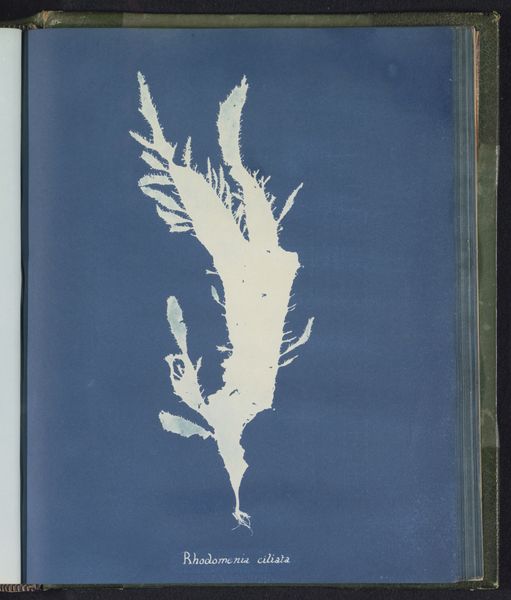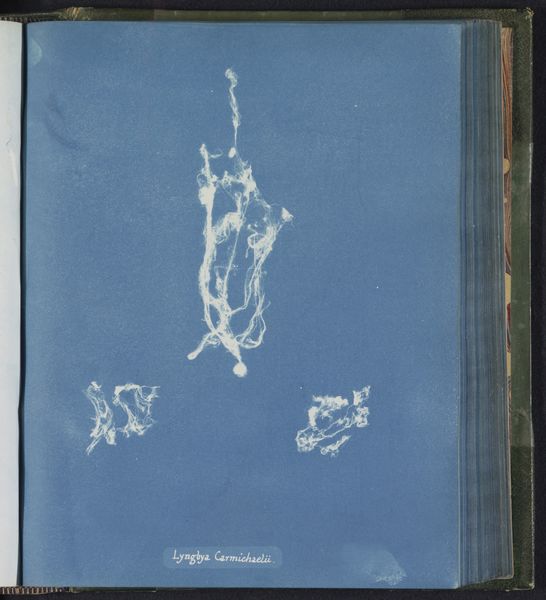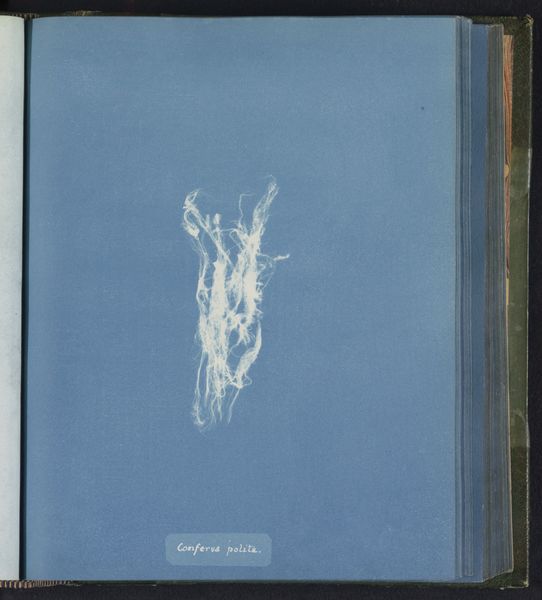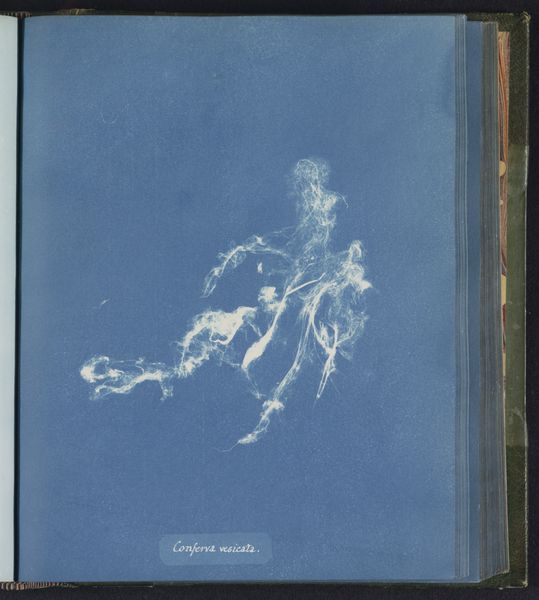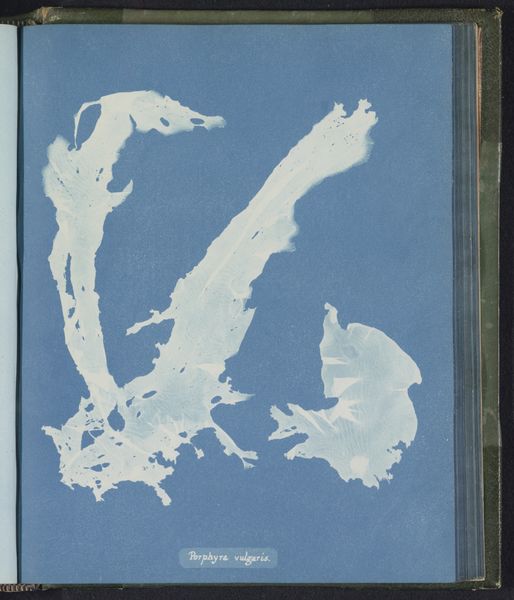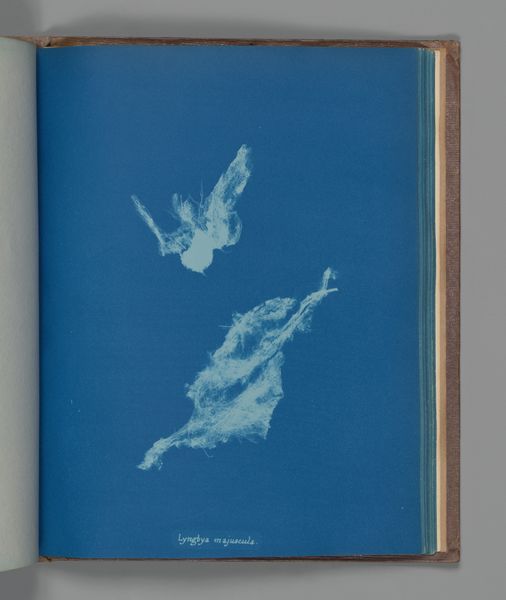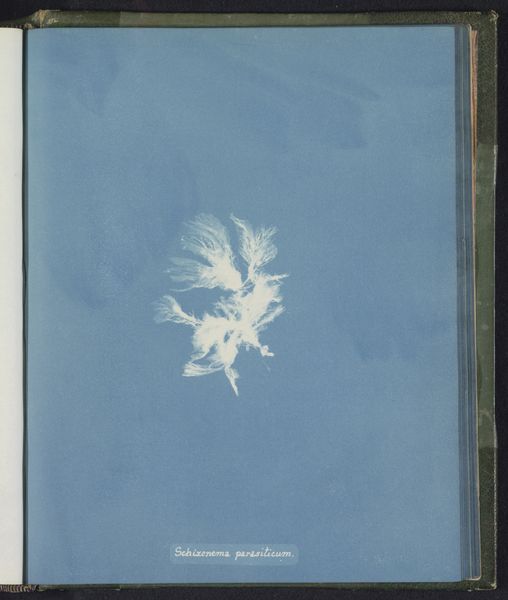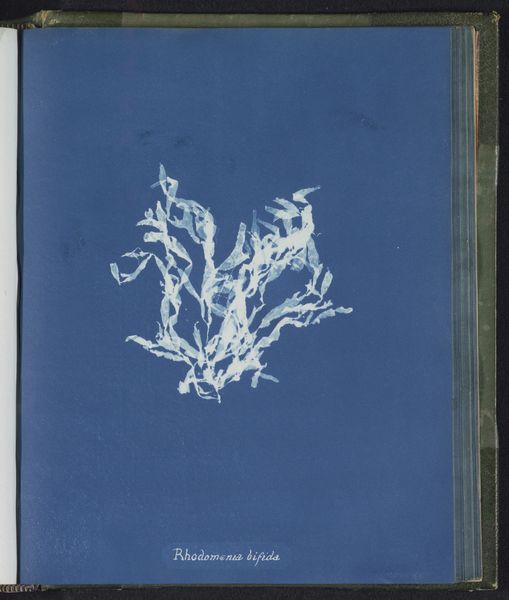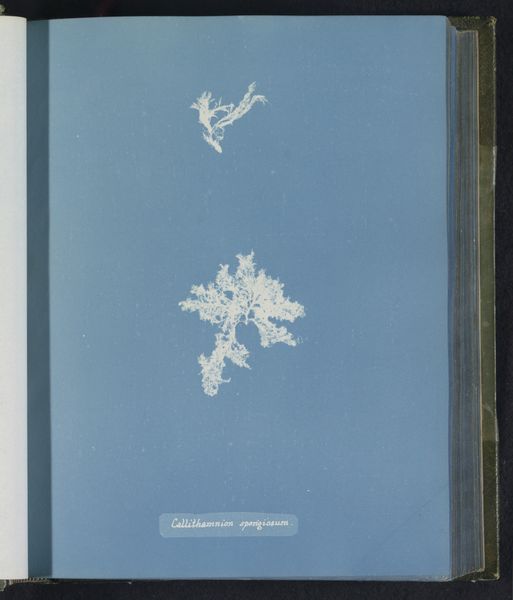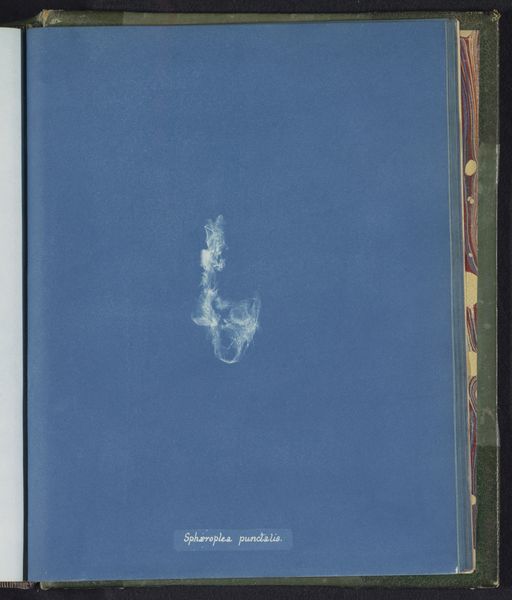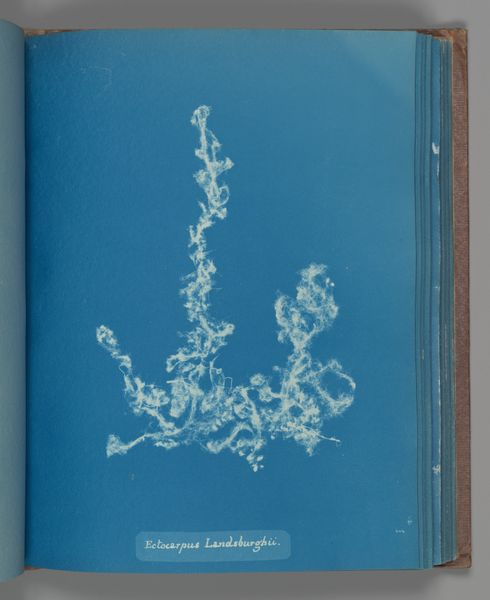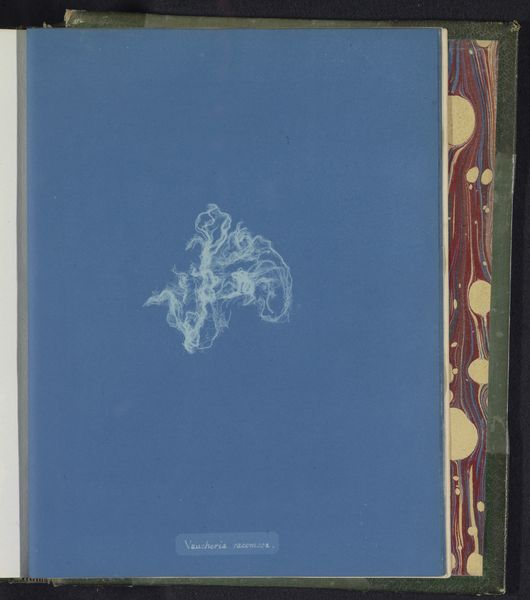
print, cyanotype, photography
#
still-life-photography
# print
#
cyanotype
#
photography
#
coloured pencil
#
naturalism
#
watercolor
Dimensions: height 250 mm, width 200 mm
Copyright: Rijks Museum: Open Domain
Anna Atkins made this cyanotype of Lyngbya majuscula, a type of blue-green algae, sometime in the mid-19th century. Atkins was a botanist, and one of the first women to practice photography. Rather than using a camera, she placed specimens directly onto paper treated with iron salts, and exposed them to sunlight. The chemistry of this process resulted in this distinctive Prussian blue ground. The algae itself appears as a ghostly white silhouette, capturing its delicate, filamentous structure. It’s important to remember that cyanotypes were a relatively new technology at the time, situating Atkins at the intersection of science and art. The craft inherent in preparing the paper and arranging the specimens allowed her to produce both a scientific record, and a work of aesthetic beauty. This reflects a tension that persisted throughout the 19th century, as photography moved from scientific tool to artistic medium. By mastering the cyanotype process, Atkins blurred the boundaries between art, science, and craft, creating a valuable visual record of the natural world.
Comments
No comments
Be the first to comment and join the conversation on the ultimate creative platform.
